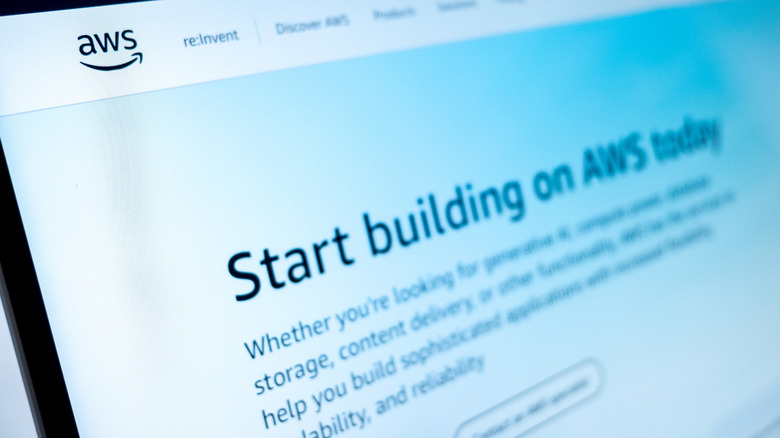We Now Know What Caused The AWS Outage That Shut Down Most Of The Internet
Nothing reminds us of just how dependent we are on the internet than when your favorite app or website is broken. This was the case on October 19, 2025, when users experienced what became a worldwide outage with Amazon Web Services (AWS). The issue was attributed to a problem in data centers located in Northern Virginia, referred to as the US-East-1 region, after the center's DynamoDB system suffered a number of system errors that forced it to go down.
The issue prevented new online connections from being made, but that error led to even more failures in Amazon Elastic Compute Cloud (EC2). Network Load Balancers and other services malfunctioned as well, and new "instances," or virtual machines, were unable to launch. This caused streaming apps like Netflix and creative platforms like Adobe to display error messages, and eventually, they stopped attempting to load at all. AWS engineers worked behind the scenes to restore service, addressing each point of failure, until all connection problems were fixed.
Amazon issued an apology online, acknowledging the severity of the situation, which got so bad that it even broke people's beds. Though they were quick to point out high performance in the past, Amazon also promised to take information from what happened and apply it to their operations moving forward. This means that hopefully, such an outage does not happen again.
AWS outages and slow-downs
Amazon Web Services (AWS), whose 2002 introduction is one of Amazon's 10 biggest moments, has experienced outages before. In December of 2021, AWS had problems on three separate occasions, originating in Northern Virginia, Oregon, and Northern California. Disney+, Slack, and Zoom are just a few of the sites that struggled to operate during those outages. The reason for those disruptions had to do with network failures, and even too much internet traffic at the same time. Even after the company supposedly fixed the problem, many users continued to have issues for hours afterward.
Problems occurred just 2 years later in June of 2023, once again originating in Northern Virginia. Over a hundred services were impacted by the errors and slow response times, and while it only lasted a couple of hours, it was enough to give users a headache. But unlike other instances, this situation did not result in a network outage. The issues were within the internal systems used by AWS itself, which directly affected everything else outside of it.
More recently, in July of 2024, AWS experienced disruptions that didn't originate in-house. This time, the problems were linked to a glitchy update from CrowdStrike, which resulted in slowdowns and temporary service issues. These outages impacted various systems relying on AWS, and while the network itself remained stable, all problems had to be addressed for operations to be restored.

